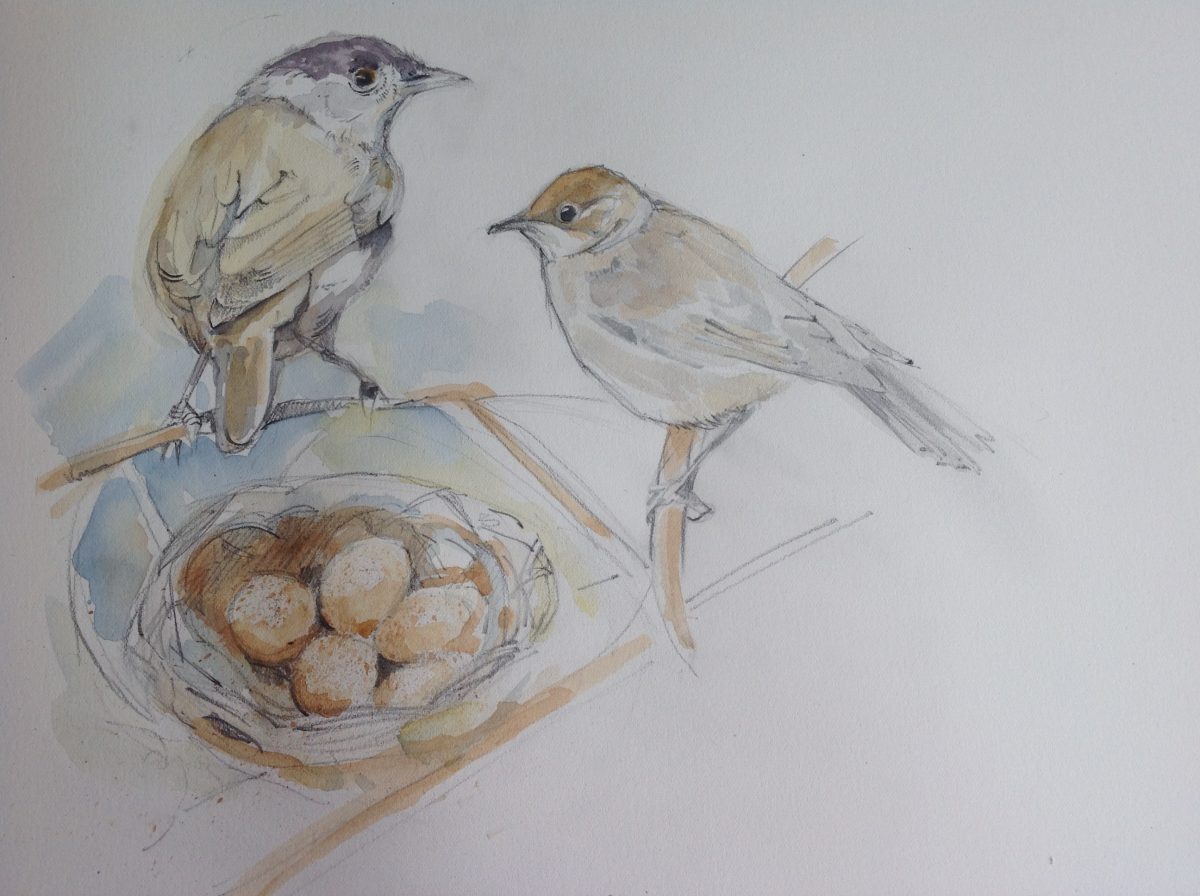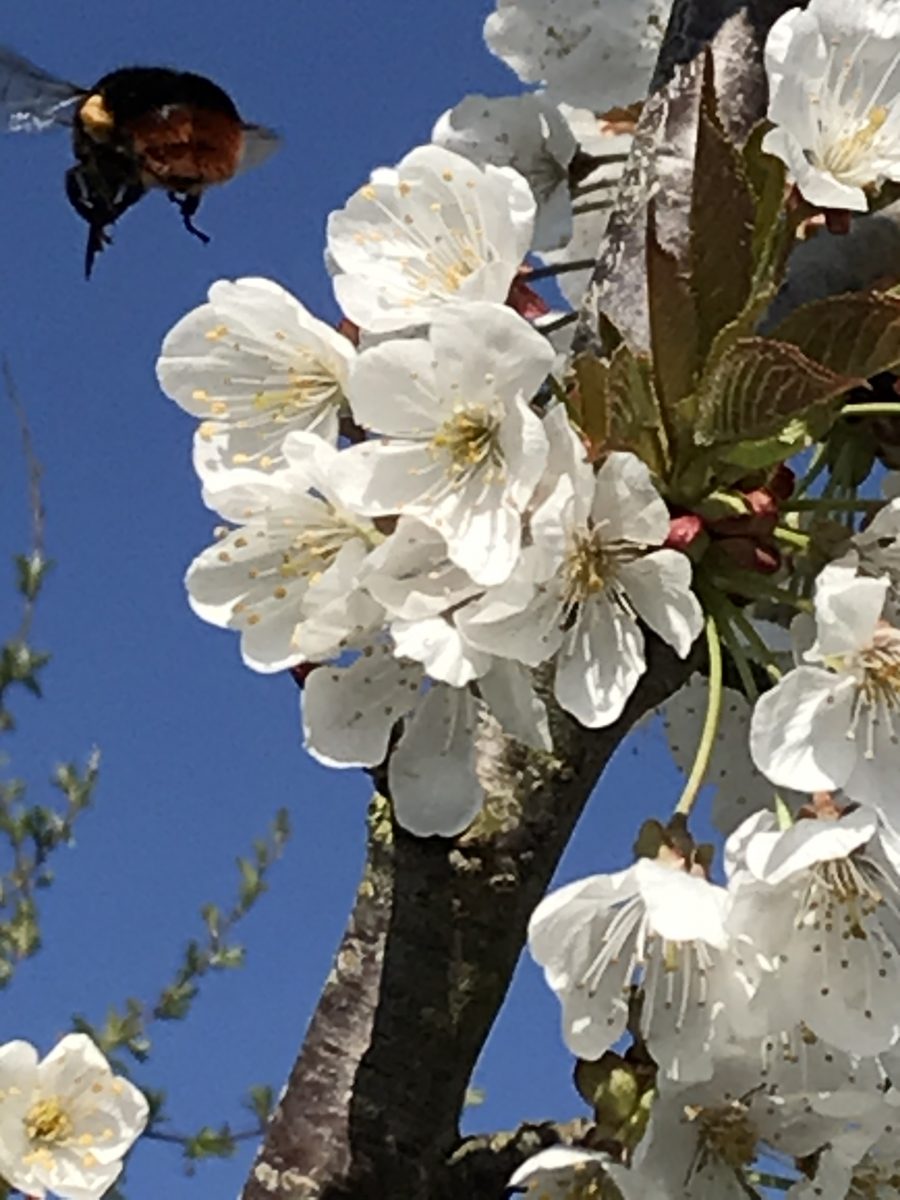It’s been the driest, hottest April on record which has been good news in some ways as we struggle to cope with the social restrictions and distancing that is required during the Covid 19 pandemic. Those of us who are lucky enough to have a garden have been able to watch it grow as the days lengthen and the temperatures rise, and the Jubilee Wood has been literally blossoming as the fruit trees flower and the heavy, sweet scent of the hawthorn bushes fills the warm air. The early balmy weather has really speeded up the opening of young green leaves on the different species of trees found in the wood and the sight of Spring migrants in the skies has made many of us smile. Let’s hope the last few days of cold and wet weather in April haven’t made them regret their decision to come back.
Half year birds
I was reading about the seventeenth century author of The Complete Angler, Isaac Walton, who called swallows ‘half year birds’ as they only tend to be with us for six months of the year before travelling back to Africa, and thought it a really appropriate nick name. It’s surprising to realise that very little was really known about the migration of birds until relatively recently (at least it seems recent for some of us!). In 1937,the British Trust for Ornithology took over the ringing of around three quarters of a million birds a year in Britain and Ireland to help improve our understanding of the movement and behaviour of many species of birds. House martins also make the incredible journey to and from sub-Saharan Africa, returning to their old mud nests under the eaves of houses. As the edges of the pond in the wood are now softening up nicely after all the rain in the last couple of days, they’ll hopefully be able to find plenty of wet mud for any repairs they have to make.
The Black Cap
Another summer visitor to our shores is the greyish warbler, the Blackcap. Although our cold winters are not usually favoured by these sun loving birds, the bird food we provide in our gardens is making it a viable option for them, especially the ones who originated from Germany and North Eastern Europe. Its lovely song has earned it the name of ‘northern nightingale, and although not experts, we think we were lucky enough to record it in the wood during a recent dawn chorus. There is a video at the end of the blog and it would be good to hear from more knowledgeable ornithologists out there if we’ve got it wrong and what other birds they can recognise from their song.

Dawn Chorus
At this time of year, one of the most uplifting sounds has to be the wonderful dawn chorus and with the recent reduction of traffic noise both day and night this has to be the best opportunity of hearing it in many decades. It may also be having a beneficial effect on those birds trying to find a mate, especially those in the cities, as they can now actually hear each other! It’s interesting to think that here in the East the birds will start singing at least half an hour before those in the South West but what is the purpose of such an early daily expenditure of avian energy throughout the land? There are lots of theories, and territory marking and mate finding seem to be two reasonable front runners as some species such as the sedge warbler and the pied flycatcher stop singing after pairing. However, why sing at dawn? It’s nice to think that it’s a gift for those of us who suffer from insomnia, to chase away the worries of the sleepless night although it’s probably much more likely that it’s of social use to the birds themselves.
This is a difficult time for us all, whether as busy front line workers, having to stay indoors or limit ourselves to half an hour’s exercise outside a day, or sadly losing loved ones to the Corvid 19 virus, but nature still rises above it all and ironically is benefitting from the reduced amounts of pollution and noise in their environment. Hopefully you can spend some of your limited exercise time in the Wood enjoying this wonderful window on the natural world, but if not, I hope the following images and videos will help a little.
Dawn Chorus videos



Useful web sites: www.rspb.org.uk
Interesting reference books: England in particular, Sue Clifford and Angela King
Good update Sue. I would add “Very” to the Interesting reference books. My copy of England in particular is often thumbed through. It’s a really good pointer to all the things we have around us and more poignantly all the things we have lost both rural and urban. Well worth the space on any bookshelf.